We were asleep in our bed in Key West when we got a call at 5am Saturday morning.
Our son Peter had woken up—he and his girlfriend were in Boston, heading off early to drive to Montreal—and heard someone taking a shower outside his bedroom.
There is no shower outside his bedroom. He got up to check it out.
What he discovered was water pouring down the walls, ceilings and through the light fixtures, like some kind of super-sized rain head shower.
The second floor hall, flooded. The front hall, flooded. The basement, flooded. Standing water, sopping wet rugs, sputtering electrical and… and…
… water pouring down our beloved front hall mural.
I hated it at first
When I first saw the house 27 years ago, I hated that mural. It seemed too dark with its grays and teal, and old fashioned, and to be honest I’d just never seen anything like it before.
But it grew on me quickly. It came to represent everything weird and funky about the house in which we raised our children. It’s a hand painted mural, probably over a hundred years old. It’s the most beautiful thing in our house.
I can save it, I thought. I’ll repaint it! The background is a light gray and I can touch up the flowers and birds with watercolor, maybe, or colored pencil. It’ll take a long time, but I’ll save it.
No, it can’t be saved.
We hired people to haul dehumidifiers, fans, and shop vacs to the house, to bring rags and disinfectant and begin an epic clean up. After three days, there’s consensus: ALL THE CEILINGS AND WALLS IN THE MAIN AREA OF THE HOUSE MUST BE REMOVED TO LET THE HOUSE DRY. Or else…
… mold.
Ice dams, burst pipes and water disasters are familiar to those from the North East. If you want to live in an old house with character, you have to learn to deal with sparking knob and tube wiring, corroded pipes that are threaded together, and horsehair insulation, among many other quirks (massive wooden gutters that leak, ancient heating systems that leave one room hot and another freezing etc etc).
It’s all cool, until it’s not cool anymore.
And now for the “Monk Room”
I’m a doer of things. I’m good at compartmentalizing. But when you can’t save something that is precious and valuable to you, it takes the wind right out of your sails.
And then I thought of a recent project I completed. Bear with me here as I take you through, step by step, the creative process that resulted in the fabrication of a wallpaper mural that will span an entire wall of a house in the Catskills.
There’s a room in the country house we’re restoring that accidentally ended up so tiny we call it “the Monk Room.” It’s only big enough to fit a twin sized bed and a small desk.
Wouldn’t it be kind of fun—and incongruous—for such an innocuous little room to have an amazing mural on the wall, we thought. Every time you go up the stairs toward the guest room, study or main bedroom you can glimpse the Monk Room from the hall.
There is no silver lining - but there is solace in creativity.
I spent about a year looking online for murals. At one point we decided on Katsushika Hokusai’s “The Great Wave,” but the image would need to be reversed to have the impact we were looking for. And the design, we finally decided, was simply too revered and well known; it had become a bit of a cliché.
Then we got an email from Kevin’s old boss, a master landscaper who had visited us at the house last year. He sent us a picture of a paulownia flower he’d just seen in a museum: it was the same flower in Jokichi Takamine’s family crest (he was the first owner of the house).
I googled “PAULOWNIA,” and picture from the Cleveland Museum of Art popped up.
Aha. I had my mural.
#1
Last year, I found a studio in Sweden, Glimmersta, that designs and prints wallpaper. This is the first design they came up with to fit the dimensions of the Monk Room walls.
Pretty cool, huh?
But where are all the paulownia? To honor Takamine, I wanted more paulownia.
#2
Okay, we got the paulownia but lost the green grass and the Japanese lettering in the corner. I could live with that.
But that weird little blue tail on the far left? Looks like a mistake, no?
#3
I asked them to add some of the other flowers back in. But I missed the river.
#4
They added it back in for me (this is just a mock up). Almost there. Now I was focused on where exactly the blue paulownia were located.
#5
Here’s me trying to show them what I wanted. And here’s the final product:
Finding flow
What all creative people seek—artists, musicians, writers—is to be in a state of flow. It’s when we are so deeply involved in our work that it alters our perception of time: hours pass and we barely notice them fly by, and yet, simultaneously, it feels as if we’ve been immersed in flow for weeks. It’s immensely rejuvenative.
As we face the destruction of our 100-year old hand painted mural, thinking and writing about the Monk Room mural brings me great solace. What can we create for the Boston hall that might honor the original? Where can we put our sadness and negative energy and frustration? We can channel it into something creative.
Writers are typically problem solvers and romantics. I think curious and creative people are lucky in that we can pivot during times of stress (if we’re lucky!) and perhaps even enter a flow state as we problem solve.
I’m hoping to reach that state at some point in the future. For now, I need to put in a call to the insurance agency.




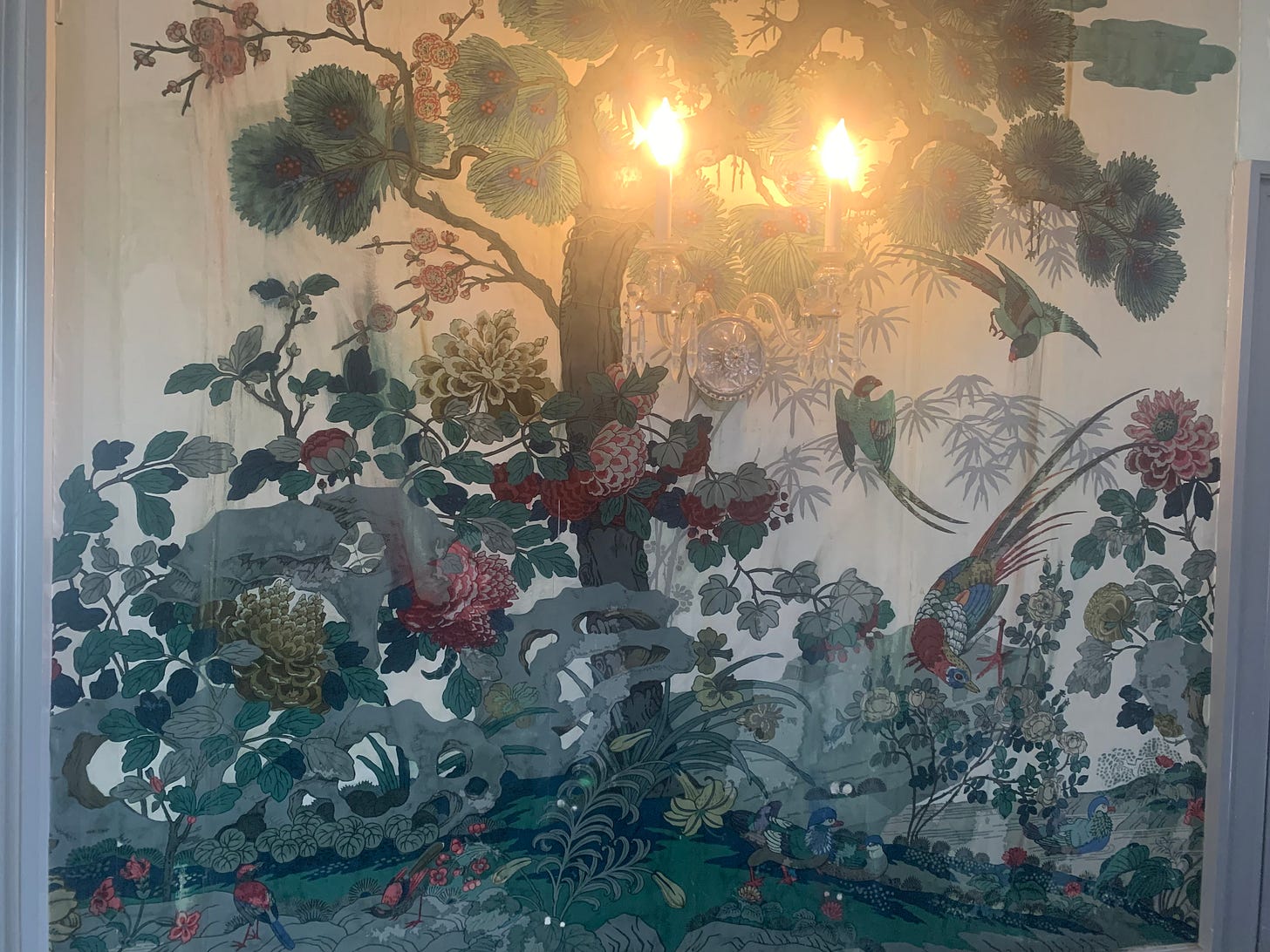

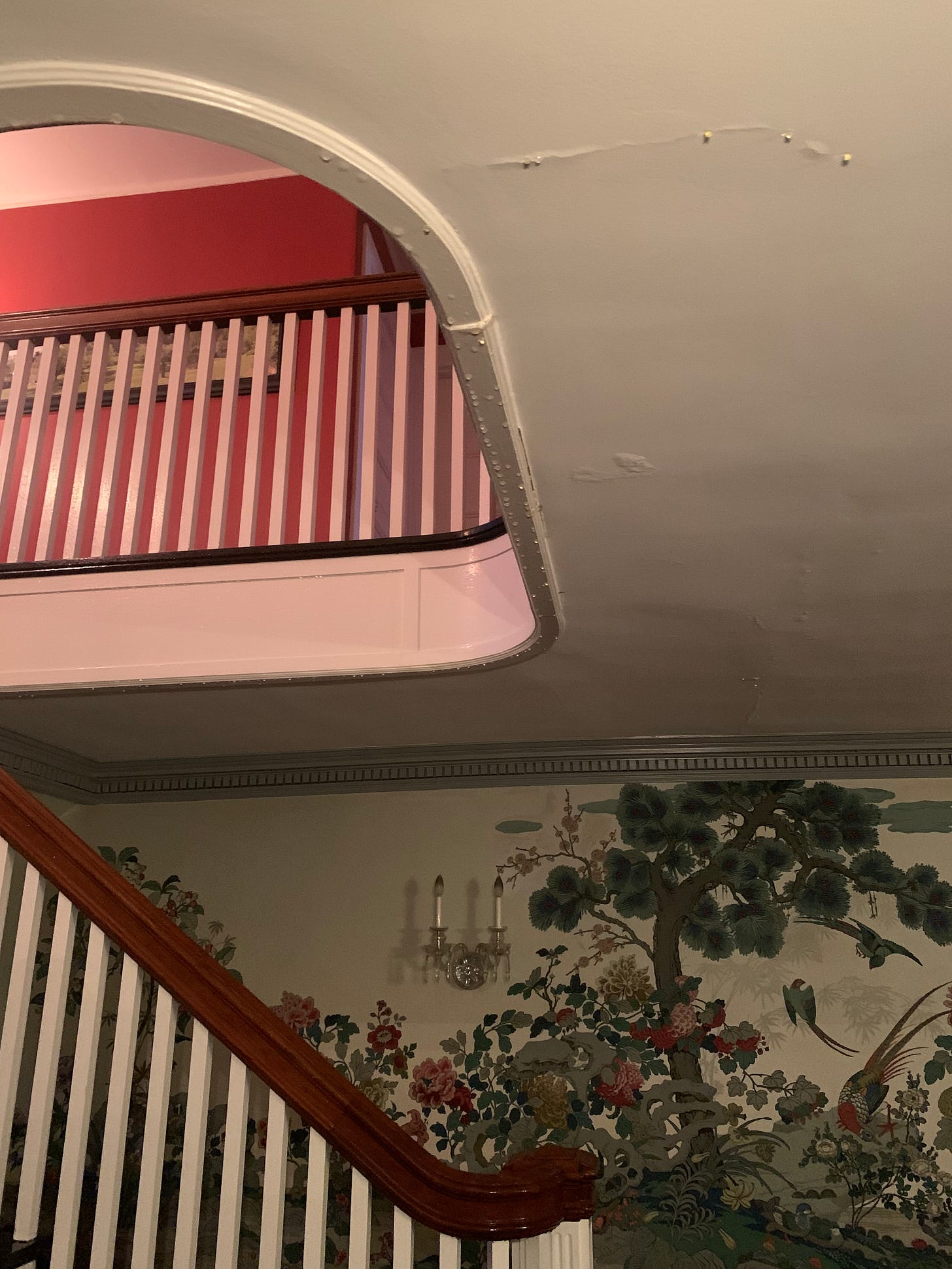


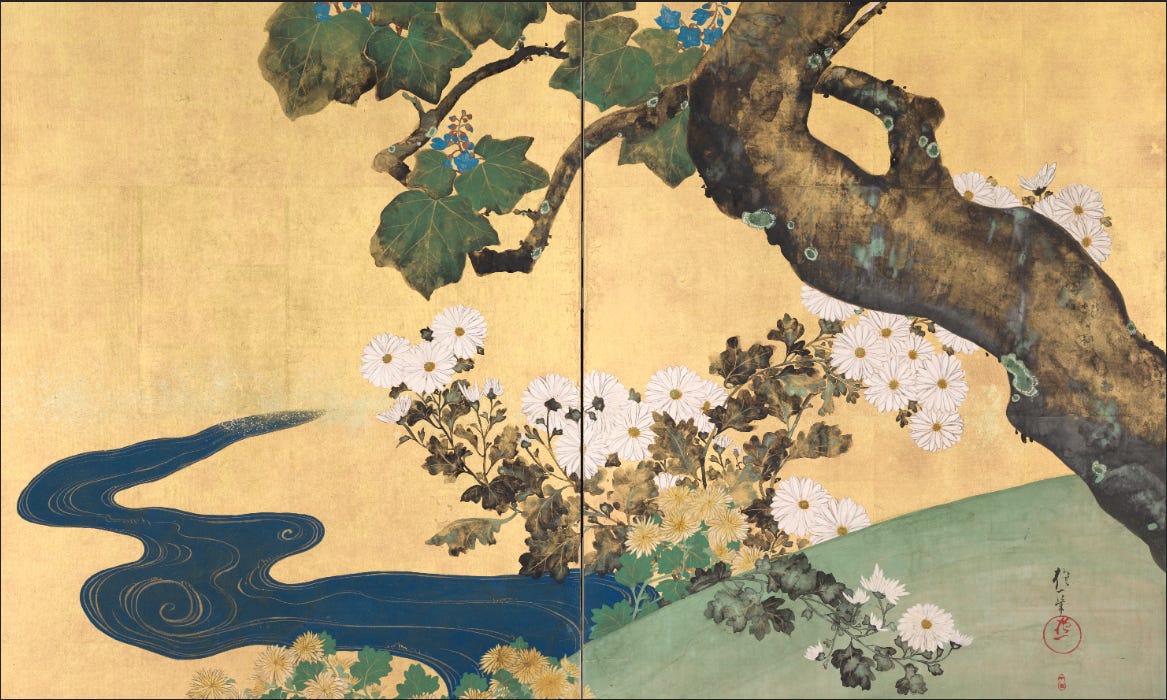
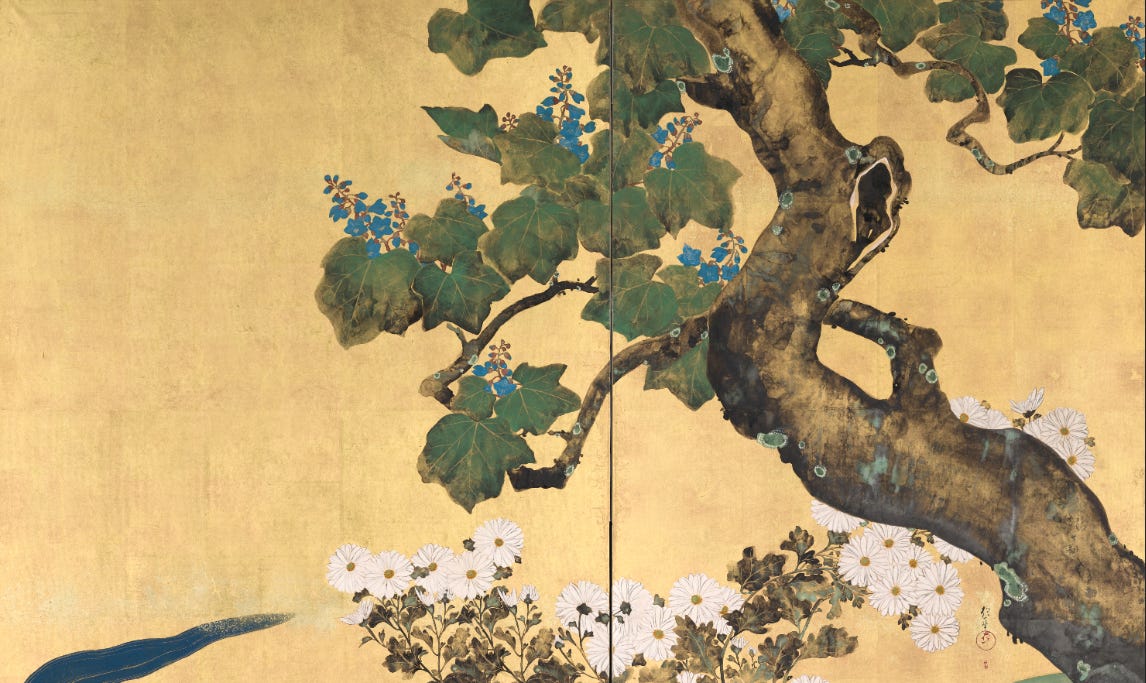


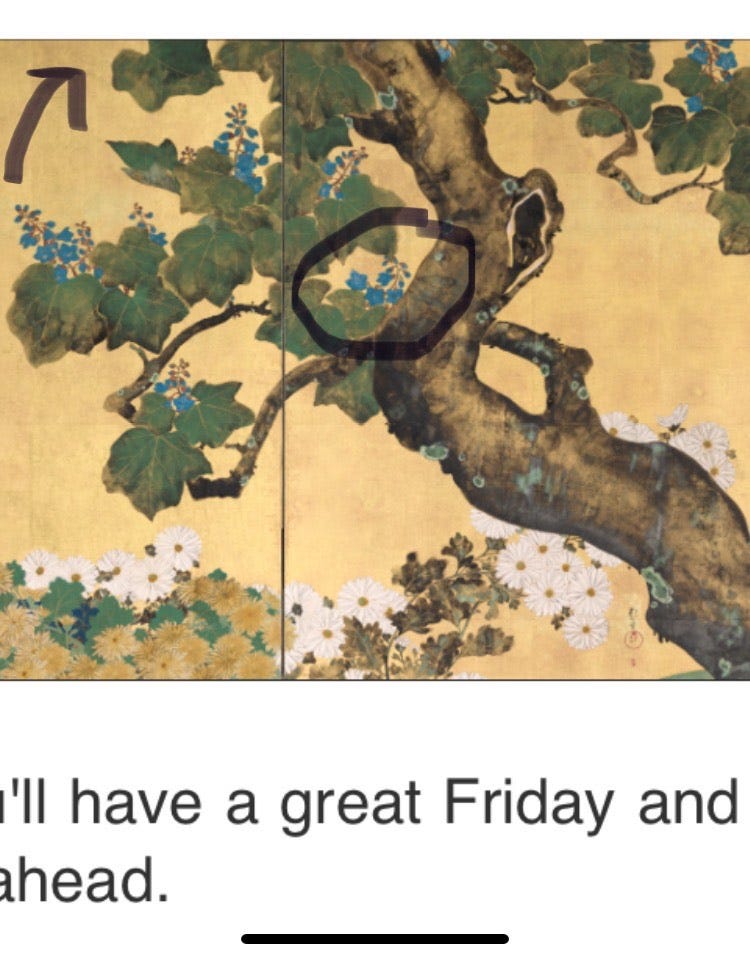

LOVE, LOVE, LOVE this. Spoke to my heart, the loss then creating a new mural-new memories. I love the original mural - I hope you find a way to bring it back to the house.
I love the Japanese mural. Bravo for this, and all the creative thoughts. "WRITE IT!" said Elizabeth Bishop, "AS DISASTER"